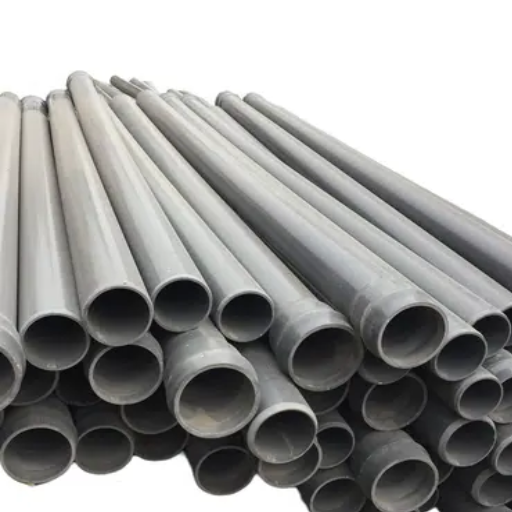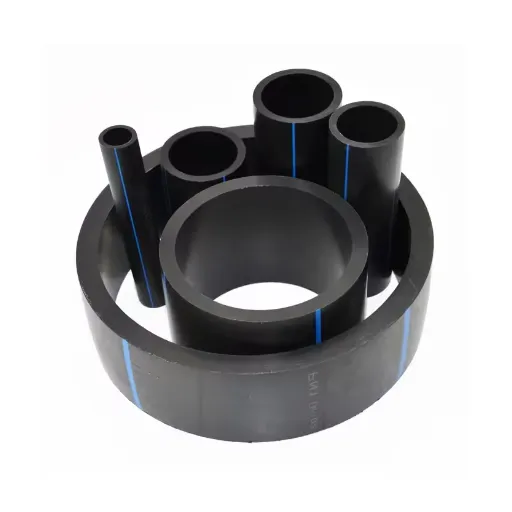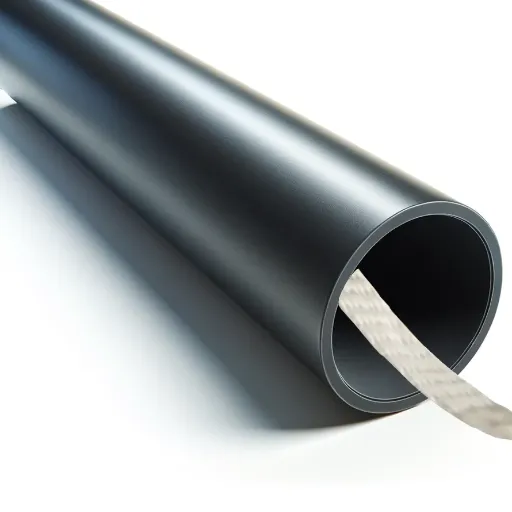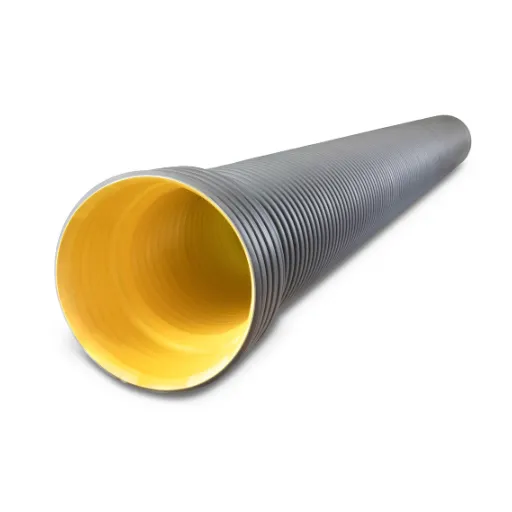When it comes to underground plumbing systems, durability and longevity are critical factors determining their overall efficiency and cost-effectiveness. PVC (polyvinyl chloride) pipes have become a popular choice for underground applications thanks to their affordability, lightweight nature, and corrosion resistance. However, understanding how long PVC pipes can reliably function beneath the surface requires considering several key factors, including soil conditions, installation practices, and exposure to external stressors. This article explores the lifespan of PVC pipes in underground environments, providing detailed insights into what impacts their longevity and offering practical advice for ensuring a robust and sustainable plumbing system. Whether you’re managing a new installation or assessing an existing one, this comprehensive guide aims to equip you with the knowledge needed to make informed decisions.
What Factors Affect the Lifespan of PVC Pipe Underground?
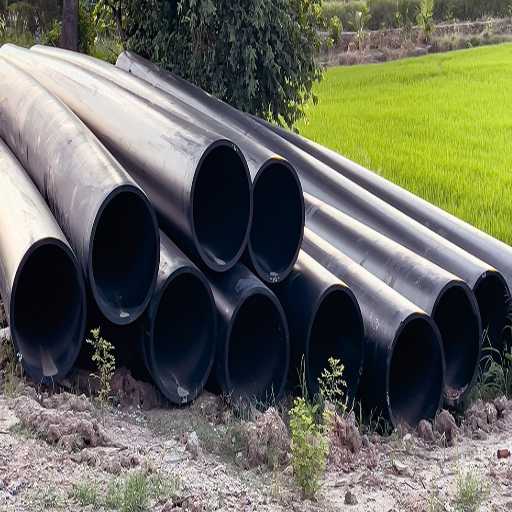
How Polyvinyl Chloride Composition Influences Durability
The composition of polyvinyl chloride, which is made of different compounds like PVC resin and additives, directly affects the strength of PVC pipes buried underground. Below are the key elements that contribute to the durability of PVC pipes:
- PVC Resin Purity: High-purity PVC resins greatly enhance the tensile strength and make it resistant to degradation. The standard expectation for underground pipes is a tensile strength ranging from 48MPa to 55MPa, as defined in ASTM D1784 guidelines.
- Stabilizers: These are used to lessen any damage during the production stage and prolonged exposure to high temperatures. For underground pipes, UV and heat stabilizers are necessary for the sustainability of the pipe under thermal changes. Ideal service temperatures are between 33°F and 140°F (1°C to 60°C).
- Plasticizers: While these compounds are used to enhance the flexibility of pipes, excessive amounts can cause the long-term rigidity and stability of the pipe to diminish. Rigid PVC pipes (unplasticized PVC, or uPVC) are usually the preferred choice for underground problems due to their extreme structural strength.
- Impact Modifier Additives: Used for enhancing the resistance of pipes to stress from the soil or any additional load. Pipes designed to withstand high external pressure usually have strict guidelines aligned with ISO 3633 and ASTM D2412 standards for impact resistance.
- Chlorination Levels: Extra resistance to chemical corrosion and high temperature tolerance are some of the characteristics of chlorinated PVC CPVC which is often used in regions where aggressive soil or water conditions are present.
By maintaining the required balance and quality of these components, PVC pipes achieve a service life of up to or exceeding 50 years under ideal conditions.
The Impact of Soil and Environmental Conditions on PVC Pipe
Both the effectiveness and the lifespan of the PVC pipes are dependent on the climatic and soil conditions. The more significant aspects are the type of soil, the amount of water, temperature, and the surrounding environment’s chemical conditions.
- Soil Type: Noncohesive soils such as sand and gravel do not have as much strength as clay or cohesive soils when it comes to supporting the pipes. Proper compaction ensures a more even load distribution, which prevents pipe deflection and stress. The soil modulus (E’ values) should also be checked. Well-graded granular soils offer ideal support characteristics and usually have E values of about ~1000 psi.
- Moisture Content: Hydrostatic loading on pipes may occur when moisture levels in the soil are high, and dry conditions may result in lower compaction effort. PVC pipe performance remains stable within normal soil moisture content extremes, but must not be excessively waterlogged for too long to avoid long-term structural stress.
- Temperature Variations: The PVC pipes have a linear thermal expansion coefficient of about 6.1×10^-5 in/ in/°F. Climatic extremes greatly affect dimensions and cause joint misalignment/stress points due to expansion/contraction. To preserve the well-being of the system over a longer duration, allowance for thermal movement within the design must be made.
- Chemical Composition: The performance of PVC is heavily influenced by the pH and ion content of the surrounding soils. Soils with a pH reading beneath 4.5, or those that are high in sulfates and chlorides, can accelerate joint deterioration. PVC’s chemical resistance dampens this effect to a great extent, but installations in aggressive chemical environments may need supplementary protective barriers or coatings.
With these benchmarks established, it is essential to follow other benchmarks set forward by ASTM D2855 for joint specifications and ASTM F1668 for environmental factors to gain multi-contractorresponsive durability and reliability for PVC pipes.
Installation Techniques to Ensure Pipes Will Last Longer
Achieving longevity with the installation of PVC pipes relies on a combination of methods that satisfy practical and technical requirements. To begin with, it is essential to achieve proper trench preparation. A loose or uncompacted supported base will cause excessive deflection of the pipe which is undesirable. Also, when trenching is being done, the minimum required cover depths, which typically range from 12-24 inches depending on traffic loads, need to be respected to avoid surface stresses.
Joint integrity is another area I would focus on. Solvent welding as described in ASTM D2855 requires, cleaning, priming, and curing that requires sufficient attention to allow joints to bond without leaks or fractures compromising their integrity. Both the ends of the pipe and fitting should be cut squarely and burr-free so that adequate engagement or bonding can be achieved.
The last two components, backfill material and the compaction of said materials need to be done correctly so that proper external loads can be supported. Rounded gravel or sand is recommended to alleviate stress concentration. There should also be enough compaction to achieve a minimum of 85% of Standard Proctor Density as stated in ASTM D2321.
Following these techniques and confirming the completed work with the technical limits will allow the production of a system of PVC pipes that has significantly enhanced durability and performance.
How Does the Type of Pipe Affect Its Lifespan?
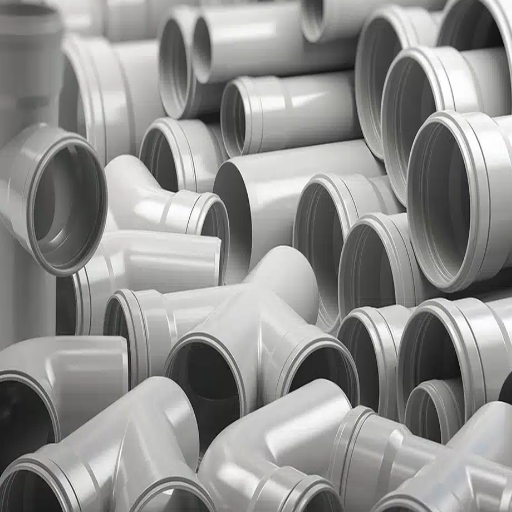
Comparing Schedule 40 PVC and Other Types
Just like other pipes, Schedule 40 PVC has its advantages and disadvantages based on several technical factors. Schedule 40 PVC has relatively high ratings because of its extremely versatile design and application. As per ASTM D1785 specifications, its nominal pressure rating ranges from 120 to 450 psi, depending on the pipe’s size and operating temperature, which makes it suitable for residential and light commercial applications.
Like Schedule 40 PVC, other pipe types such as Schedule 80 PVC have unique features which provide thicker walls and higher pressure tolerance. The drawback of this, however, is a greatly reduced flow rate due to reduced internal diameter. A perfect example would be while a 1-inch Schedule 40 PVC pipe has a wall thickness of 0.133 inches, the wall thickness in Schedule 80 of the same size increases to 0.179 inches, this number greatly alters its hydraulic performance.
Furthermore, when placing an equal comparison against CPVC, which is designed for more hot water applications, Schedule 40 is also more optimally suited for colder water systems. CPVC can withstand up to 200 Fahrenheit due to its enhanced material properties, Schedule 40 PVC’s continuous use limits this to 140 Fahrenheit.
Based on the standard environments with a set of pressure, temperature, and flow rates, Schedule 40 PVC is usually a cost-effective and dependable option. However, for applications that necessitate higher thermal resistance or pressure rating, Schedule 80 PVC or CPVC systems might be better options.
Understanding the Role of Water Pressure in Pipe Longevity
The life expectancy and durability of plumbing systems heavily rely on water pressure. Excessive water pressure can lead to increased stress on the pipes and fittings which would lead to failure, deformation, or excessive wear. Schedule 40 PVC can withstand a maximum pressure of 120-810 psi at 73°F, however, this pressure rating decreases at an exponential rate with increased temperatures. As an example, pressure ratings drop by around 20-25% at 100°F. Proper management of pressure is critical to ensuring the system remains ia n functional state.
- Operating Pressure: With the rated limits of the pipe set, no material fatigue or rupture takes place.
- Temperature Dependency: The tolerable range for pressure weakens with an increase in temperature. For example, Schedule 40 PVC is rated 450 psi at 73°F, but only withstands 280 psi at 110°F.
- Flow Rate Dynamics: Uncontrolled high flow rates increase the risk of pressure surges or cause water hammer effects which decrease the life expectancy of the pipe materials.
- Material Sensitivity: Sustainably high pressures and high temperatures make PVC fittings more sensitive than CPVC or metal pipes.
Optimizing the system’s durability accrues in the active use of plumbing networks safety coefficient. This ensures that the operational water pressure and temperature are significantly lower than the pipeline and its fitting’s technical limits.
How Can You Ensure Your PVC Pipe is Properly Installed?
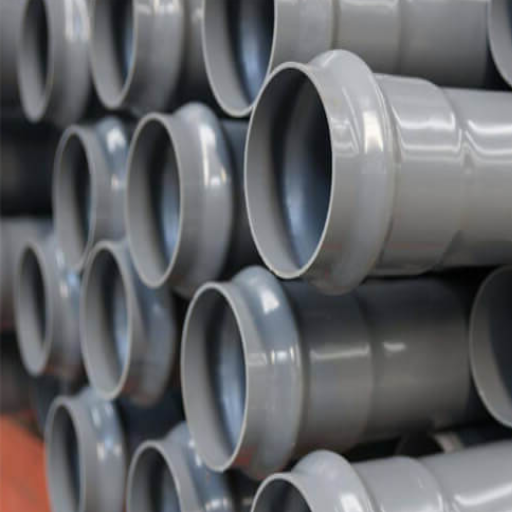
Steps to Avoid Damage to Underground PVC
- Piping Support, Trenching, and Thrust Blocks: Make sure trenches are straight and without any sharp-edged stones or debris which may penetrate or weaken the pipes. The bottom of the trench bottom should be uniform or smooth and support sand pipe along the length of the pipe.
- Trenching and Thrust Block Backfill: The pipe should be covered with sand or fine sediment and the trench should be at least 4 to 6 inches deep at the bottom and 6 to 8 inches deep at the top. The subsequent layers of soil should be compacted but care should be taken not to displace or damage the pipe.
- Maintenance of the Piping: Ensure that pipes are not subjected to heavy static storage or dynamic loads. A vertical cover of 12 to 18 inches above ground level is sufficient to protect them from heavy traffic, but the final cover restrictions are set depending on soil type and load weight (ANSI/AWWA C605 standards).
- Thermal Effects: Apply expansion joints or leave enough slack for movement to prevent stress on the pipe from temperature variations. PVC’s linear coefficient of thermal expansion is approximately 0.000043 in/in/°F.
- Transportation and Final Steps: Do not drag, drop, or place pipes on rough surfaces as the surface will create scratches or alter the shape of the pipes.
- Retention of Joint Integrity: Apply appropriate PVC cement or adhesive and allow for sufficient curing time (usually 24 hours before full pressure testing) to help maintain the joint.
- Adequate Pressure Rating Proof: Check that the installed pipe meets the pressure requirements of your system. For instance, Schedule 40 PVC pipes have working pressure limitations of up to 450 psi based on size and system configuration.
After following these steps and abiding by the necessary details, underground PVC pipe installations should remain common reliable, and stress-resistant over time.
Common Mistakes to Avoid for Emergency Plumbing Issues
Most plumbing emergencies require urgent attention, which means the correct steps must be taken as quickly as possible. Here are some crucial mistakes to avoid when dealing with such issues:
- Not Turning Off the Water Supply: You must locate the water supply meter, which is usually in the basement, and turn it off. Otherwise, flooding could worsen, leading to severe and costly water damage.
- Wrong Tool and Material Selection: Non-code-approved sealants and adhesives can jeopardize the overall structure and repair of the plumbing system. Make sure to have the proper plumbing tape such as PTFE for gas or water lines.
- Pipe Connection Over-tightening: Tightening too much can result in cracked fittings or stripped threads, which would place the connection at serious risk of damage. Based on industry standards, the recommended torque values are between 10 and 15 ft-lbs for threaded PVC pipes.
- System Depressurization Neglect: Fixing a pressurized system can be incredibly risky due to the injuries one may sustain, or with flooding. Always turn on taps below the repair zone to let pressure out before getting to work.
- Poor pipe size and location: An inadequate pipe size utilized for temporary fixes can cause an imbalance with pressure. For example, a pipe meant to carry water at a specific rate (for instance, an ½ inch pipe meant for 6 gallons a minute) must never be substituted without thorough loading capability reassessment.
- Skipping Cyclic Leak Testing: After any repairs, always conduct hydrostatic or air pressure tests to establish non-leak integrity.
By eliminating these mistakes and rationalizing your actions around well-defined technical parameters, system plumbing emergency repairs will be effective and preferable with a low margin of error to system operation or safety.
What is the Expected Life Expectancy of PVC Sewer Lines?
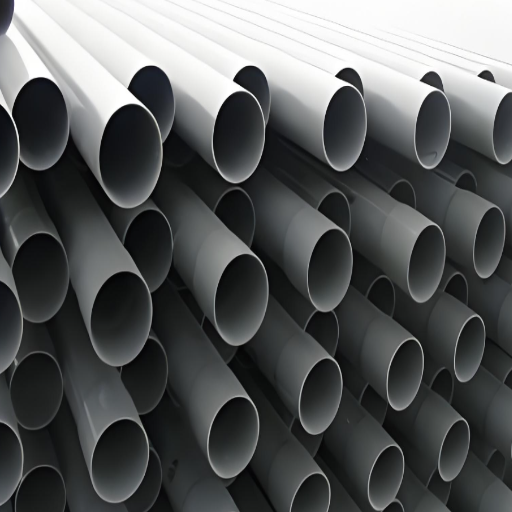
Typical Lifespan of Buried Underground Pipes
The expected durability of buried underground structures, such as sewer pipes made from PVC, ranges from 50 to 100 years depending on various aspects. To me, their life span seems to depend on factors such as the type of soil, installation quality, the material made of the pipes ,and other environmental factors.
- Chemical Resistance: PVC is utilized in sewer pipes because of its excellent resistance to corrosion and chemical degradation. It is inert which means there is very little wear over time.
- Tensile Strength: PVC has a tensile strength of about 7,000 PSI which can support normal loading without structural failure.
- Installation Depth: Pipes are usually buried from a depth of between 12 and 36 inches in most residential buildings which insulates them from external mechanical factors like freeze-thaw cycles.
- Operating Temperature Range: The polymer is most effective when the temperature is between 32°F and 140°F. Straying from this optimal temperature can pose a risk to its structural intensity.
By adhering to these parameters during specification, installation, and maintenance, the expected life expectancy of PVC sewer lines can be maximized.
Signs Your PVC Sewer May Need Replacement
Addressing serious problems with a sewer system is made easier through the early detection of issues with PVC pipes, allowing for considerable cost savings. The following are prime indicators of issues relating to PVC pipes:
- Consistent Clogging: Frequent clogs could stem from breaks in the PVC pipes or are caused by the pipes not being aligned right which is causing improper water flow.
- Odor Detection: A sewage smell around your house is a major indicator of cracks and breaks in the sewer line.
- Constantly Sluggish Drains: Drains that are routinely slow to drain suggest that there is something obstructive within the pipe or even possible pipe collapse.
- Surface Depressions: A soft spot in a previously solid surface area is a sign of a collapsed and broken pipe and a structure supporting the pipe failing.
If you suspect any of these problems, I recommend inspecting your PVC sewer system thoroughly, either through visual assessment or by consulting a professional. Keep in mind that mechanical stress and exceeding the material’s tensile strength of 7,000 PSI can accelerate wear or failure, justifying the need for replacement.
Maintaining Your PVC Piping Systems for Optimal Performance
To achieve peak efficiency of your PVC pipes, a maintenance plan that comprises regular checks, correct handling, and other preventive actions is essential. The following points should be paid attention to:
- Analysis Interval: At a minimum, I suggest that you visually inspect your PVC pipes for color changes, distortion, or cracks twice a year. Such issues need to be evaluated closely during the inspections.
- Allowed Pressure and Temperature: Always observe the limits of pressure for operating conditions. Schedule 40 PVC pipes rated at 450 PSI do not function well at higher than 73 degrees Fahrenheit. Also, avoid using PVC pipes at temperatures greater than 140 degrees Fahrenheit. Above these limits, the pipes will lose shape and strength.
- Use of Suitable Materials: All joints require compatible fittings and solvent cement to prevent leaks or eventual pipe damage. Unconventional or improper joints can result in severe dehydration, determining pipe losses for long periods.
- Effective shield against sunlight: For permanent installations, the pipes should be coated or sleeved with UV-resistant materials to avoid degradation of material due to long periods of direct exposure to sunlight. Solar radiation for a long duration will affect the tensile strength of the pipe.
- Mechanical Stress: The pipe must not be subjected to excessive or sudden movements and overloading to avoid exceeding the permissible tensile stress of the material which is 7,000 PSI.
Embracing these strategies and correcting issues as they arise will help you maintain the effectiveness and durability of your PVC piping systems.
Can PVC Pipes Outlast Other Materials Like Cast Iron?
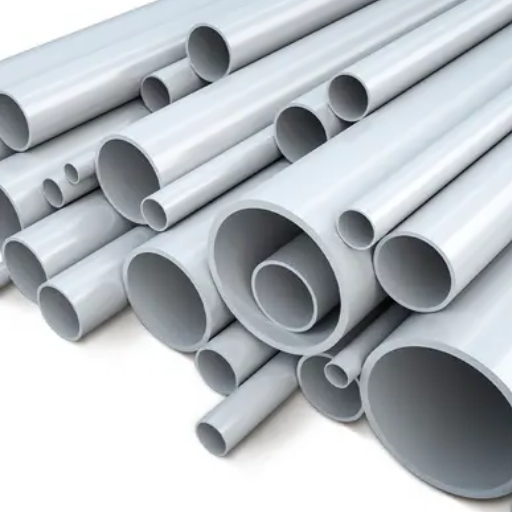
Comparing Corrosion Resistance and Durability
Compared to cast iron, PVC pipes have a better ability to resist corrosion and are more durable. Since PVC pipes are non-metallic, they do not interact with moisture or most chemicals in the environment, which means that they have great inherent corrosion resistance. Cast Iron, however, is prone to rusting and corrosion, especially in damp or very acidic conditions.
Durability is enhanced because PVC pipes have a high tensile strength of about 7,000 PSI. While cast iron is mechanically strong, it has surface issues caused by corrosion as well. Additionally, PVC has a smooth internal surface which makes it experience lower friction losses and scaling compared to cast iron which suffers from deposit formation. This surface roughness also makes PVC more hydraulically efficient.
The life span of cast iron pipes can span several decades, although it needs environmental considerations and proper maintenance. As long as they are protected properly, PVC pipes are more reliable because they are non-reactive in nature and UV resistant, allowing them to easily outlast cast iron in most situations.
The Longevity of Pipes Typically Used in Plumbing Systems
Both cast iron and PVC pipes on comparison of life expectancy have both strong and weak aspects. If installed and maintained properly cast iron pipes can last 50 to 100 years in an environment of reasonable soil acidity and moisture. However, the presence of corrosion can greatly speed up the destruction of pipes, especially if there are no protective measures lined up.
In contrast, PVC pipes have longevity ranging from 50 to 80 years with little maintenance because they do not corrode. They also work well in different settings because of their smooth internal surface which decreases friction and helps maintain hydraulic efficiency over time. The Pipes polymer frame is estimated to have a tensile strength of 7,000 PSI so it is also resistant to aggressive physical strains. Furthermore, the internal surface of the pipes can resist UV light. The reliable durability is also guaranteed because PVC can withstand chemical destruction.
In conclusion, PVC is preferred in modern plumbing systems over other materials due to its long-term usefulness, while cast iron strengthens mechanically but fails when there is corrosion without external aid.
Reference sources
Frequently Asked Questions (FAQs)
Q: How long can PVC pipes last underground?
A: PVC pipes may last up to 100 years when used underground, thanks to their durable structure. The lifespan of a particular PVC pipe will last as long as environmental conditions and installation quality allow.
Q: What factors affect the longevity of PVC pipes?
A: Several factors can damage a plumbing system, including soil conditions, installation practices, and the presence of chemicals. Proper installation by a plumber and regular maintenance can ensure that your PVC piping lasts as long as possible.
Q: Do PVC fittings typically last as long as PVC pipes?
A: PVC fittings are designed to complement the pipes, and when installed correctly, they typically last just as long as the pipes themselves. Regular inspection by PVC experts can help maintain their integrity.
Q: Are PVC pipes suitable for all types of underground systems?
A: PVC pipes are widely used for various systems that are buried underground, including plumbing and irrigation. However, it’s essential to consult with a plumber to ensure they are suitable for your specific needs.
Q: Can exposed pipes affect the longevity of PVC piping lines?
A: Exposed pipes can be more susceptible to environmental damage. However, when PVC is used underground, it is less likely to experience such issues, contributing to a longer lifespan.
Q: How was PVC introduced in the 1960s beneficial for plumbing?
A: Introduced in the 1960s, PVC revolutionized plumbing materials by offering a durable, corrosion-resistant alternative to traditional metal pipes, thus extending the lifespan of plumbing systems.
Q: Does using too much or too little PVC cement affect pipe longevity?
A: Using too much or too little PVC cement can compromise the joints, potentially leading to leaks or structural failures. Proper application is crucial to ensure that your PVC piping system remains robust over time.
Q: How can I ensure my PVC in your home lasts as long as possible?
A: Regular maintenance, quality installation, and consulting with a plumber can help ensure that the PVC in your home lasts as long as possible, maintaining the functionality of your plumbing system.
Q: Is it true that PVC pipes have a lifespan of 100 years?
A: Indeed, when properly installed and maintained, PVC pipes can have a lifespan of 100 years. This longevity makes them an excellent choice for long-term plumbing solutions.



